Mosquito
Mosquitoes occupy a variety of habitats that significantly influence their distribution and population dynamics. Understanding these habitats is essential for effective surveillance and control strategies.
Call Us when you Need Help!
Mosquito
Mosquitoes, belonging to the family Culicidae, are small, flying insects with over 3,500 known species globally. They are primarily recognized for their role as vectors in transmitting various infectious diseases to humans and animals, making them one of the most notorious pests in public health. Notably, mosquitoes are responsible for the transmission of diseases such as malaria, dengue fever, Zika virus, and chikungunya, which collectively affect millions of individuals worldwide and result in significant morbidity and mortality each year.The ecological impact of mosquitoes is multifaceted; they play a vital role in food webs, serving as prey for various predators, including birds, bats, and aquatic organisms, while also contributing to plant pollination. However, their capacity to carry pathogens poses serious health risks, leading to ongoing global efforts aimed at disease prevention and mosquito control. The World Health Organization (WHO) estimates that mosquito-borne diseases result in significant economic burdens, exacerbating poverty and straining healthcare systems, particularly in tropical and subtropical regions where such diseases are endemic.Mosquitoes undergo a complex life cycle comprising four stages: egg, larva, pupa, and adult. This adaptability allows them to thrive in diverse habitats, ranging from stagnant water bodies to artificial containers, where they breed and mature. Different mosquito genera, including Aedes, Anopheles, and Culex, exhibit distinct behaviors, feeding patterns, and ecological roles, further complicating control measures. Aedes mosquitoes, for example, are known for their aggressive biting and daytime activity, while Anopheles species are primarily associated with malaria transmission, highlighting the need for targeted interventions.Controversies surrounding mosquito control strategies have emerged, particularly regarding the use of chemical pesticides and genetically modified organisms (GMOs) in managing mosquito populations. While these approaches can be effective in reducing disease transmission, concerns about environmental impacts and ethical implications of genetic interventions continue to provoke debate among scientists, policymakers, and the public.Understanding the biology and behavior of mosquitoes is crucial in developing comprehensive strategies to mitigate their public health impact while balancing ecological considerations.
Biology of Mosquitoes
Anatomy
The anatomy of mosquitoes is adapted for their lifestyle and feeding habits. Their bodies are divided into three main segments: the head, thorax, and abdomen. The head contains sensory organs such as compound eyes and antennae, along with the proboscis, which is a complex structure designed for piercing the skin of their hosts to extract blood.The thorax, where the wings and legs are attached, allows for agile flight, while the abdomen houses the reproductive and digestive systems.
Feeding Mechanism
The proboscis is a key feature that enables mosquitoes to feed effectively. It consists of a labium that forms a U-shaped structure, sheathing a bundle of six piercing mouthparts (stylets). The mosquito’s feeding process involves sawing through the skin with these mouthparts, which can penetrate with minimal force, allowing for painless insertion.
Life Cycle
Mosquitoes undergo a complete metamorphosis, progressing through four distinct life stages: egg, larva, pupa, and adult.
Larval Stage
After hatching, mosquito larvae live in water and are often referred to as “wrigglers.” They feed on organic material in their aquatic environment and must come to the surface to breathe through specialized structures
Pupal Stage
The pupal stage, or “tumbler,” is a transitional phase where the larva develops into an adult. Pupae do not feed but must surface frequently for air. After a few days, the adult mosquito emerges from the pupa, ready to begin its life cycle.
Adult Stage
Once matured, adult mosquitoes are typically ready to mate within days. Males gather in swarms to attract females, who mate only once in their lifetime.After mating, females require a blood meal to develop their eggs and can live for up to three weeks in the wild, depending on environmental factors
Eggs
Female mosquitoes lay eggs in various environments depending on the species. For example, Anopheles mosquitoes lay their eggs on the surface of water, while Aedes mosquitoes deposit theirs on damp surfaces near water. The egg-laying strategy can involve the laying of up to 100-200 eggs at a time, with some eggs hatching simultaneously, while others may remain dormant until favorable conditions arise
Overview
Mosquitoes are small, flying insects belonging to the family Culicidae, with over 3,500 known species spread across more than 40 genera.These insects are primarily recognized for their elongated bodies, narrow wings, and specialized mouthparts known as the proboscis, which they use for feeding on blood. This feeding behavior is mainly exhibited by female mosquitoes, as they require blood to develop their eggs, while male mosquitoes typically feed on nectar and other plant juices
Ecological Role
Mosquitoes play a significant role in ecosystems. They serve as a food source for various species, including fish, birds, amphibians, and reptiles. Additionally, certain mosquito species act as pollinators, contributing to the reproduction of various plants and crops.However, some species within the genera Anopheles, Aedes, and Culex are notable for their roles as vectors of human diseases, including malaria, dengue fever, and Zika virus, highlighting the dual nature of their ecological impact
Types of Mosquitoes
Mosquitoes are classified into several genera, with the most significant being Aedes, Anopheles, and Culex, each of which includes species that can transmit various diseases to humans and animals. This section provides an overview of these key genera and their associated species.
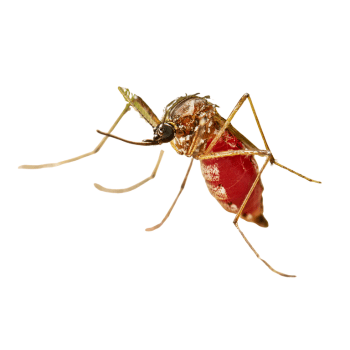
Aedes Mosquitoes
Aedes mosquitoes are known for their distinctive black and white markings and are primarily active during the day, with peak activity occurring in the early morning and late afternoon. They are significant vectors for various viral diseases, including dengue fever, chikungunya, Zika virus, and yellow fever

Aedes aegypti
Commonly referred to as the yellow fever mosquito, Aedes aegypti is predominantly found in urban areas and is known for its preference to feed on humans rather than animals. This species lays its eggs in manmade containers such as discarded tires and plant pots, making it a significant concern for public health
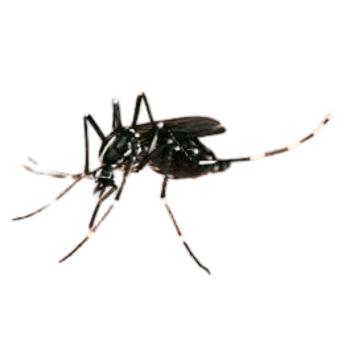
Aedes albopictus
Also known as the Asian tiger mosquito, Aedes albopictus has adapted to a wider range of environments, including urban and suburban areas. Unlike Aedes aegypti, it can thrive in cooler climates and is known for transmitting dengue fever and the chikungunya virus
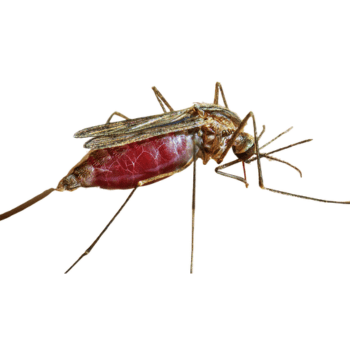
Anopheles Mosquitoes
Anopheles mosquitoes are primarily known for their role in transmitting malaria. They are most active during dawn and dusk and prefer habitats with standing water, such as ponds, marshes, and swamps. Anopheles species are identifiable by their unique resting posture, which is angled with their bodies raised upwards.
- Anopheles gambiae: This species is one of the primary vectors for malaria in Africa.
- Anopheles stephensi: Found mainly in urban areas in the Middle East and South Asia, it is another significant malaria vector.
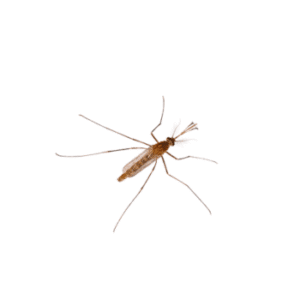
Culex Mosquitoes
Culex mosquitoes, commonly known as house mosquitoes, are active primarily at night and are notorious for transmitting West Nile virus, St. Louis encephalitis, and Japanese encephalitis. These mosquitoes are often found in polluted or stagnant water with high organic content, which serves as breeding grounds.
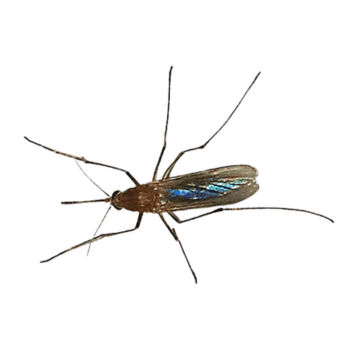
Culex pipiens
Known as the northern house mosquito, Culex pipiens is prevalent in colder regions and thrives in stagnant or polluted water. This species is often found in urban areas and can transmit various encephalitis viruses
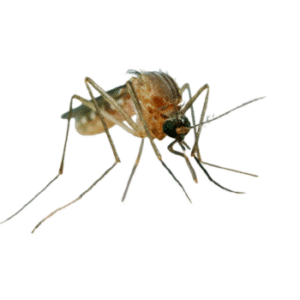
Culex quinquefasciatus
This species, known as the southern house mosquito, is more adaptable to warmer climates and is commonly found in the southern United States. It breeds in nutrient-rich fresh water but can also thrive in stagnant water
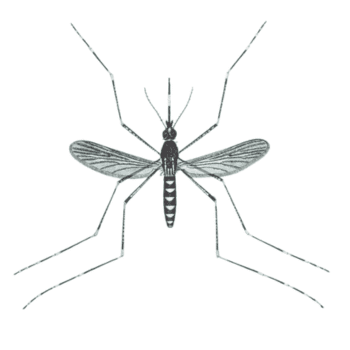
Culex tarsalis
Commonly referred to as the western encephalitis mosquito, Culex tarsalis inhabits the midwestern and western regions of the U.S., preferring areas with standing water that receives sunlight
Habitat and Distribution
Mosquitoes occupy a variety of habitats that significantly influence their distribution and population dynamics. Understanding these habitats is essential for effective surveillance and control strategies.
Types of Habitats
Mosquito habitats can generally be categorized into four types: running water, transient water, permanent water, and containers. Each habitat type supports different mosquito species and has unique ecological characteristics.
Running Water
This habitat includes streams and rivers where few mosquito species thrive due to the constantly flowing nature of the water. Species adapted to this environment typically have life cycles that can cope with the rapid current.
Transient Water
Transient water bodies are temporary pools formed after rainfall or flooding. They provide crucial breeding sites for various mosquito species. The conditions in these habitats change seasonally, affecting the mosquito species present as well as their lifecycle stages.
Permanent Water
Permanent water bodies, such as lakes and swamps, support a distinct community of mosquitoes. Species like Anopheles, Culex, Culiseta, Coquillettidia, and Uranotaenia are commonly associated with this habitat. These mosquitoes rely on stable aquatic environments for breeding, as their eggs are not resistant to desiccation and must be laid directly on the water surface
Container Habitats
Container habitats can be both natural, like treeholes, and artificial, such as discarded tires. Treeholes often contain tannin-enriched water that is clear and provides shelter against predators, while artificial containers have become prevalent and can transport species outside their native ranges. Aedes species, for example, commonly oviposit near the edges of such containers, requiring flooding to hatch their eggs
Environmental Influences on Distribution
The distribution of mosquito species is heavily influenced by environmental conditions, particularly climate variables such as temperature, humidity, and precipitation. In a study conducted over two years in Manitoba, Canada, it was found that the effects of environmental drivers accounted for 80% of the spatial variation in mosquito communities, emphasizing the importance of abiotic factors over biotic interactions in determining species distributions. Furthermore, the presence or absence of various vegetation types also acts as a critical indicator of long-term environmental conditions, affecting mosquito larvae habitats and overall aquatic ecosystems.
Vegetation not only provides necessary shade and cover but also influences the breeding success and survival rates of mosquito populations.
Behavior and Ecology
Mosquitoes exhibit complex patterns of behavior that are significantly influenced by their sensory systems, environmental factors, and interactions with both predators and prey. Understanding these behaviors is crucial for managing mosquito populations and mitigating the risks associated with vector-borne diseases.
Sensory and Attraction Mechanisms
The attraction of mosquitoes to humans and other animals is driven by various stimuli, including carbon dioxide, temperature, moisture, odor, color, and movement. Female mosquitoes, which require blood meals for reproduction, are particularly adept at detecting these cues. Interestingly, male mosquitoes do not bite; instead, they primarily feed on nectar from flowers. The blood feeding behavior of female mosquitoes varies by species, with some preferring specific hosts, such as birds or mammals, while others are more generalists
Environmental Influences
Environmental factors play a significant role in mosquito behavior. The presence of alternative hosts in an area, landscape characteristics that provide breeding habitats, and climatic conditions such as rainfall, temperature, and wind can all influence mosquito abundance and activity. For instance, warm, humid, and windless conditions are particularly favorable for gravid females seeking egg-laying sites, while higher wind speeds can reduce their ability to locate these sites
Predator-Prey Dynamics
Predator-prey interactions can also shape mosquito behavior and ecology. Variation in prey traits, driven by both consumptive and non-consumptive effects of predators, can influence the dynamics of vector-borne diseases
Feeding Behavior
Most female mosquitoes require a blood meal to develop eggs, which triggers a hormonal cascade necessary for egg productio. After feeding, the female secretes a peritrophic membrane that separates the blood from other stomach contents, facilitating digestion over several days. Additionally, female mosquitoes engage in nectar feeding for energy, which supports their overall metabolic needs
Population Dynamics and Swarming
The feeding activities of female mosquitoes can lead to significant population dynamics, particularly in northern regions where only a few generations occur each year. In such areas, large swarms of blood-feeding females can result in severe blood loss for their hosts, sometimes leading to anemia or death. Furthermore, mating behaviors often take place within these swarms, where males and females are attracted to one another by specific sounds and wing beat frequencies
Mosquito-Borne Diseases
Mosquito-borne diseases are illnesses transmitted to humans and animals through the bites of infected mosquitoes. When a mosquito feeds on blood, it can ingest various viruses or parasites, which can then be passed on to subsequent hosts through the mosquito’s saliva. These diseases can cause significant suffering, affecting millions of people worldwide each year. The World Health Organization (WHO) estimates that approximately 390 million people are infected annually with dengue alone, with additional cases of diseases like Zika, chikungunya, and yellow fever also reported extensively.
Common Types of Mosquito-Borne Diseases
Malaria
Malaria is perhaps the most recognized mosquito-borne disease, predominantly found in tropical regions. It is caused by parasitic protozoa of the genus Plasmodium, which are transmitted by the bites of infected female Anopheles mosquitoes. Symptoms typically manifest 10-15 days after a mosquito bite and can range from mild, such as fever and headaches, to severe complications, including seizures and respiratory distress. In 2023, the WHO estimated over 200 million cases and 608,000 deaths related to malaria, with the African continent bearing a disproportionate share of this burden.
Dengue Fever
Dengue fever is a viral illness transmitted primarily by the Aedes aegypti and Aedes albopictus mosquitoes. Symptoms usually appear 4-10 days after infection and may include high fever, pain behind the eyes, muscle and joint pain, and nausea. Although many cases are mild, severe dengue can be fatal. In 2023, more than 6.5 million cases and over 7,300 deaths were reported from 80 countries, according to the WHO.
Zika Virus
Zika is another viral infection transmitted by Aedes mosquitoes, typically manifesting symptoms such as rash, fever, conjunctivitis, and muscle or joint pain within 3-14 days of infection. While Zika often causes mild illness, it poses significant risks to pregnant women, potentially leading to serious birth defects like microcephaly in infants.
Chikungunya
Chikungunya is a viral disease characterized by sudden onset fever, severe joint pain, headaches, and nausea, appearing 4-8 days after infection. Misdiagnosis is common due to overlapping symptoms with dengue and Zika, which often leads to an underestimation of its prevalence. Severe cases and fatalities are rare and typically occur in individuals with preexisting health conditions.
Yellow Fever
Yellow fever is a viral disease primarily transmitted by Aedes and Haemagogus mosquitoes. While many infected individuals remain asymptomatic or exhibit mild symptoms, approximately 12% can develop serious complications, including organ failure and jaundice, within 3-5 days of infection. As of 2023, yellow fever remains endemic in 34 African countries and 13 nations in Central and South America.
Transmission Dynamics
Mosquito-borne diseases can be transmitted through horizontal transmission, where the mosquito injects pathogens into the host during a blood meal. Additionally, vertical transmission may occur, where pathogens are passed from adult mosquitoes to their offspring, further complicating control efforts.
Economic Impact
The economic impact of mosquitoes and mosquito-borne diseases is substantial, affecting both global health systems and local economies. Mosquito-borne diseases, such as malaria, dengue fever, and West Nile virus, contribute to significant morbidity and mortality, particularly in tropical and subtropical regions, where these diseases are endemic. The World Mosquito Program estimates that these diseases kill more than one million people and infect up to 700 million each year, leading to a staggering economic burden that strains healthcare systems and hinders economic development.
Direct Costs
The direct costs associated with mosquito-borne diseases include medical expenses for treatment and prevention. These costs are compounded by lost productivity due to illness, which can have severe implications for both individuals and communities. For instance, in regions heavily impacted by malaria, the economic burden can extend to a reduction in workforce capacity, thereby affecting local and national economies.
Indirect Costs
Indirectly, mosquitoes affect economies by influencing tourism and property values. Areas known for high mosquito populations and associated diseases may deter tourists, which can have a cascading effect on local businesses reliant on tourism revenue.
Long-term Economic Consequences
The long-term economic consequences of mosquito-borne diseases are profound. In regions where these diseases are prevalent, continuous outbreaks can lead to a lack of investment in infrastructure and development. As a result, countries may struggle to attract foreign investment or enhance local industries, leading to further economic stagnation.
Mitigation Efforts and Economic Benefits
Efforts to mitigate mosquito populations and the diseases they spread can result in significant economic benefits. Organized mosquito control programs, which have proliferated in response to past outbreaks like the West Nile virus, demonstrate the potential for community-led initiatives to improve public health and economic stability.
Mosquito Control
Mosquito control strategies are essential for managing mosquito populations and mitigating the diseases they transmit to humans and animals. Effective control requires a comprehensive approach that incorporates various methods including source reduction, chemical treatments, biological control, and community involvement.
Integrated Mosquito Management
Integrated Mosquito Management (IMM) is a holistic approach that combines different control techniques to minimize mosquito populations sustainably. The best programs involve a blend of point source reduction, routine larviciding, and adulticiding, which is employed only when necessary. This strategy emphasizes environmental consciousness and seeks to use integrated methods rather than relying solely on chemical treatments.
Source Reduction
One of the most effective ways to control mosquito populations is through source reduction, which involves eliminating breeding sites. Since mosquitoes reproduce in standing water, removing potential breeding habitats—such as discarded tires, clogged gutters, and stagnant ponds—can significantly reduce their numbers. Community efforts are vital in this aspect, as organized mosquito control programs often work to identify and manage these sites collectively.
Larval Control
Controlling mosquito larvae is another crucial aspect of mosquito management.
Chemical Larvicides
Chemical larvicides, such as methoprene and temephos, are applied to water bodies to target mosquito larvae before they mature into adults. Methoprene works by mimicking natural growth hormones in larvae, inhibiting their development, while temephos is a granular insecticide specifically designed for water treatment.
Biological Control
Biological control involves using natural predators or pathogens to manage mosquito populations. For instance, introducing fish species such as mosquitofish and killifish into water bodies can effectively reduce larval numbers, as they feed on mosquito larvae. However, caution is necessary to avoid ecological disruptions, so controlled environments like aquaponics may offer a safer alternative
Adult Control
Controlling adult mosquito populations is often the most recognized aspect of mosquito management.
Chemical Adulticides
Adulticides, such as DEET and pyrethroids, are applied through aerial or ground-based spraying to reduce adult mosquito populations effectively. These chemicals target adult mosquitoes and are typically deployed when surveillance indicates an increase in populations or the presence of disease transmission. Aerial spraying allows for treating large areas efficiently with minimal pesticide use.
Mechanical and Natural Controls
In addition to chemical methods, mechanical traps and natural repellents can be effective in reducing adult mosquito populations. Electric fans can create a draft that disrupts the weak flying ability of mosquitoes, while natural repellents like citronella can deter them without causing harm to other insects.
Community Involvement and Surveillance
Engaging the community is essential in mosquito control strategies. Educating residents about proper waste disposal, eliminating standing water, and recognizing mosquito breeding habitats fosters participation in control efforts. Surveillance plays a critical role in these strategies, allowing for timely responses to increases in mosquito populations and the presence of disease

